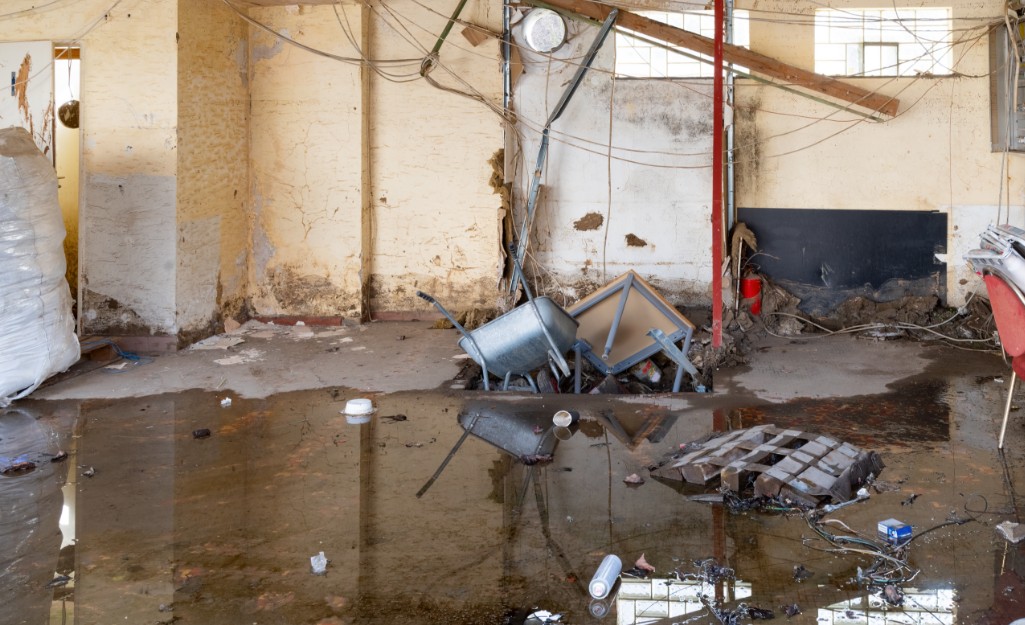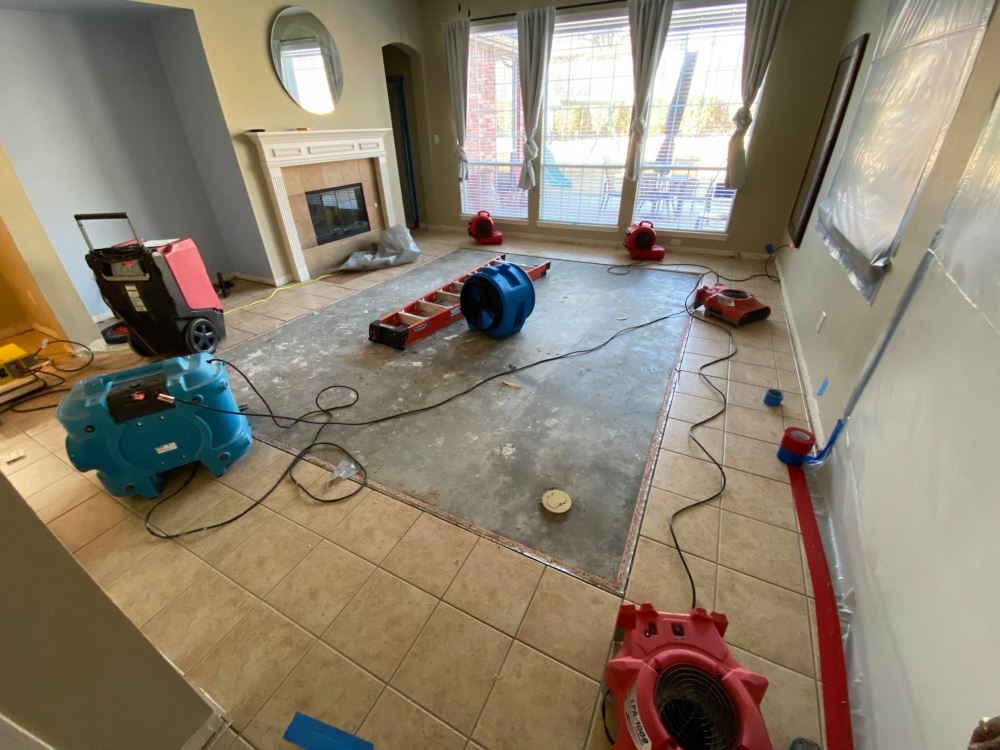Water Damage Restoration 101: Recognizing the Process and Expense
Water damage can strike unexpectedly, leaving property owners in a state of complication. Understanding the restoration procedure is crucial for reliable recovery. From evaluating the damage to selecting the ideal service supplier, each step impacts the general end result and price. Variables such as the sort of water damage and seriousness likewise play a significant function. What are the specific techniques made use of in reconstruction, and how can one get ready for prospective costs?
Kinds of Water Damage
Water damage can occur from different sources, each providing distinct challenges for reconstruction. The 3 key kinds of water damage are categorized based on contamination levels: tidy water, grey water, and black water. Tidy water stems from resources like broken pipelines or rain, presenting minimal wellness dangers. Gray water, that includes wastewater from sinks or washing equipments, has impurities that may cause pain or health problem if ingested. Black water, the most harmful category, comes from sewage or floodwaters, having dangerous microorganisms and pathogens. Each type demands particular reconstruction techniques and safety steps to efficiently resolve the damage and minimize health dangers. Comprehending these distinctions is necessary for homeowners and professionals entailed in the water damage restoration procedure.
Initial Analysis and Inspection
A complete first evaluation and examination are important steps in the water damage reconstruction procedure. This phase begins with a professional reviewing the extent of the damage, identifying the source of the water invasion, and establishing the kind of water involved - Flood Cleanup Services. Specialists make use of customized equipment to measure wetness degrees in various products, such as walls, floorings, and furnishings. In addition, they assess structural integrity and prospective carcinogen, consisting of mold and mildew development. The searchings for from this evaluation inform the remediation strategy, assisting necessary actions and source allotment. Exact paperwork of the damage is crucial for insurance coverage cases and future reference. In general, this first assessment prepares for effective remediation, making sure a detailed feedback to the particular situation available

Water Removal Techniques
Complying with the initial assessment, effective water removal techniques are employed to alleviate damage and prevent additional problems. These techniques involve the usage of specialized tools such as completely submersible pumps and industrial-grade vacuum cleaners. The choice of method depends upon the volume of water present and the kind of products influenced. For standing water, submersible pumps are generally made use of for quick removal, while vacuums are optimal for removing water from carpets and furniture. Additionally, progressed techniques like water removal mats may be employed for hard-to-reach areas. The objective is to get rid of as much water as possible, minimizing the capacity for mold and mildew growth and structural damage. Trigger and efficient water removal is crucial in the total water damage remediation process.
Drying and Dehumidification Process
Once the water removal is total, the drying and dehumidification process comes to be essential to bring back the affected location. This phase generally uses industrial-grade dehumidifiers and air moving companies to effectively reduce moisture levels. The dehumidifiers pull in damp air, eliminating excess humidity, while air moving companies flow air to speed up dissipation. Monitoring tools is often used to track humidity and temperature level levels, ensuring ideal drying out problems. The period of this procedure can differ relying on the level of the water damage and ecological aspects. It is important to thoroughly dry all impacted materials, consisting of wall surfaces, floor covering, and furnishings, to avoid mold growth and structural damage. Correct implementation of this action is critical for an effective reconstruction result.
Cleaning and Sterilizing Affected Locations

Initial Evaluation and Inspection
Prior to starting any repair initiatives, a detailed preliminary evaluation and examination of the affected areas are essential for effective cleaning and sterilizing. This process entails determining the degree of water damage, establishing the resource of the water breach, and examining the materials affected. Assessors normally look for indications of mold development, structural integrity concerns, and harmed valuables. The analysis likewise includes examining wetness degrees making use of customized equipment to guarantee no surprise water pockets stay, as these can lead to more complications. Documenting the findings is essential for intending the following action in the repair process. A thorough initial evaluation allows remediation experts to design a targeted technique for efficient cleaning and disinfecting, eventually lessening damage and health and wellness threats.
Cleaning Up Methods and Products
Effective cleaning and sanitizing of water-damaged areas need a range of techniques and items tailored to the certain materials impacted. For porous surface areas like drywall and carpets, removal methods are vital to get rid of excess dampness, adhered to by deep cleaning with specialized detergents. Non-porous materials such as floor tile or steel can be cleaned up making use of commercial-grade cleansers that successfully eliminate pollutants. Steam cleansing is one more efficient method, particularly for rugs and furniture, as it uses high temperatures to eliminate microorganisms and mold and mildew. Furthermore, environmentally friendly items are progressively preferred for their safety and security and effectiveness. Inevitably, choosing the suitable cleaning methods and items not just guarantees immediate tidiness yet likewise help in preventing additional damage and carcinogen related to water invasion.
Sanitization and Disinfection Approaches
When dealing with water damage, proper sanitization and disinfection methods are necessary to assure the safety and health of the damaged environment. After initial cleansing, surface areas need to be treated with appropriate disinfectants to get rid of microorganisms, mold and mildew, and germs that flourish in moist problems. Typical approaches include using EPA-approved chemical disinfectants, which can be applied through splashing or cleaning techniques. Additionally, ultraviolet (UV) light systems can effectively sanitize areas by neutralizing microorganisms without harsh chemicals. The choice of approach frequently depends on the kind of products influenced and the level of contamination. Ultimately, complete sanitization not just recovers a safe space however also aids stop future health risks connected with remaining moisture and mold and mildew development.

Fixings and Restoration Options

Variables Affecting Restoration Prices
The degree of water damage directly impacts the reconstruction costs homeowners can expect to incur. Variables such as the source of the water, the period of direct exposure, and the afflicted materials substantially influence pricing. For circumstances, tidy water damage from a busted pipeline is usually less expensive to recover compared to damage caused by sewer. In addition, the level of contamination dictates the need for specialized cleansing and disposal solutions, further boosting costs. Geographic location likewise plays a function, as regional labor rates and availability of remediation solutions can differ. The necessity of the feedback impacts costs; quicker interventions generally lead to lower overall expenses by avoiding additional damage. Recognizing these aspects is vital for homeowners when approximating reconstruction expenses
The three main kinds of water damage are categorized based on contamination levels: clean water, gray water, and black water. An extensive first analysis and assessment are crucial actions in the water damage reconstruction procedure. For standing water, completely submersible pumps are usually made use of for quick elimination, while vacuum cleaners are excellent for extracting water from rugs and upholstery. The degree of water damage directly affects the repair sets you back home owners can anticipate to sustain. Clean water damage from a busted pipeline is normally less expensive to bring back contrasted to damage created by sewer.